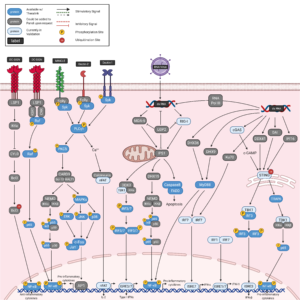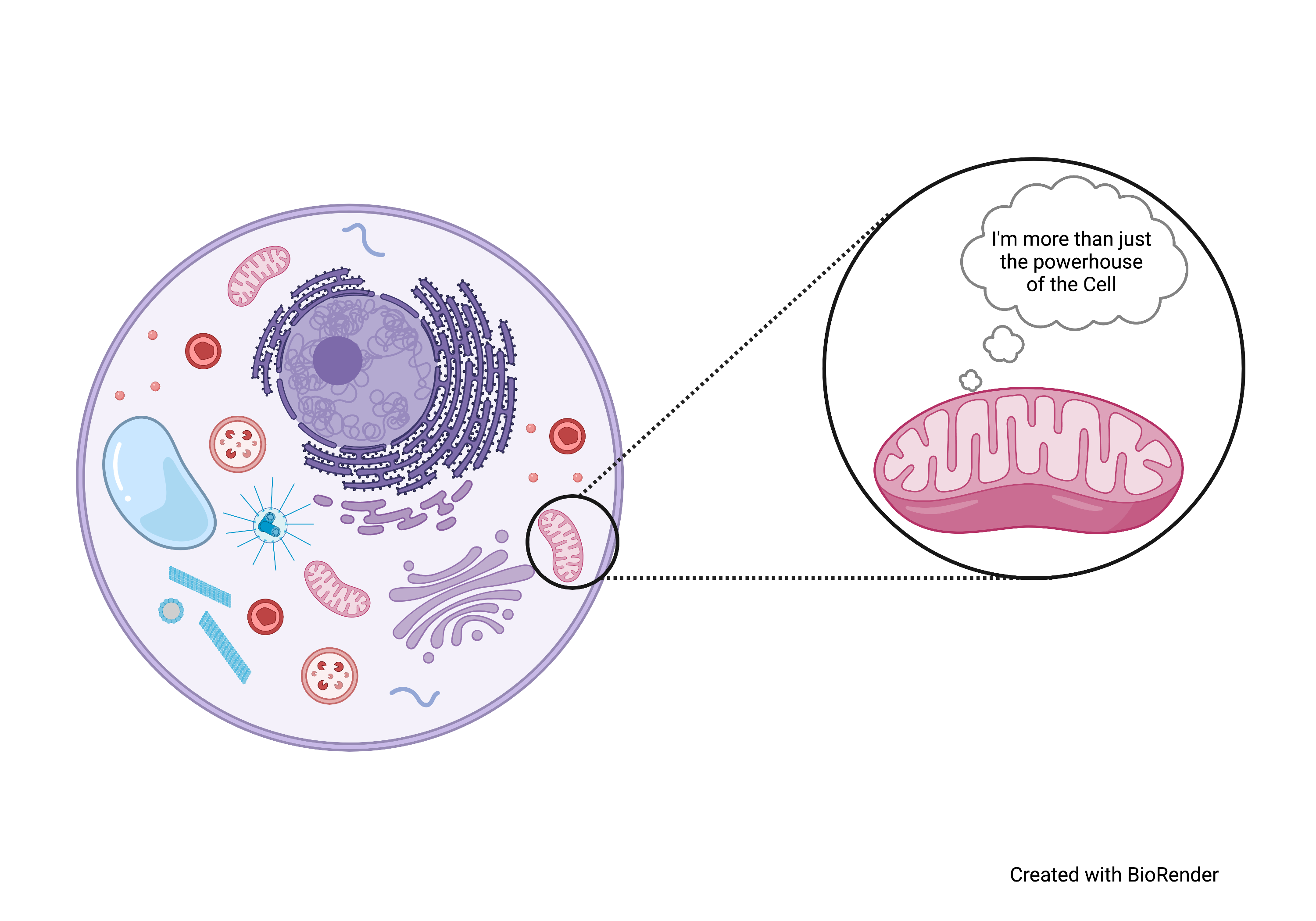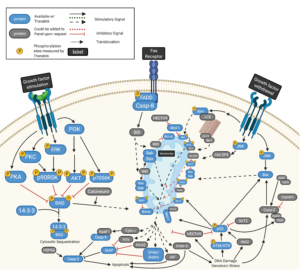“Mitochondria is the Powerhouse of the Cell”- every Middle School Science teacher ever
If there’s anything we all took away from 7th-grade science class, it’s that Mitochondria is the powerhouse of the cell. This phrase was originally coined by a biologist, Philip Siekevitz in the article “Powerhouse of the Cell” published in 1957. Although Mitochondria are more well known for their role in ATP synthesis, they are indispensable for various other cellular processes, including fatty acid synthesis, Calcium ion homeostasis, and the biogenesis of haem and iron-sulfur proteins. They are also involved in many cell signaling pathways including cell death, and innate immunity.
Cell Death
Pro-apoptotic stimuli such as DNA damage activate BH3-only proteins that, in turn, activate BAX and BAK. When activated, BAX and BAK cause mitochondrial outer membrane permeabilization (MOMP). This leads to the release of proteins from the intermembrane space activating caspases and causing apoptosis. MOMP can also lead to caspase-independent cell death.
Besides apoptosis, mitochondria may have a role in other forms of programmed cell death. An important example is a necrosis-like cell death pathway that is activated by various triggers, including death-receptor ligation, which requires the kinase receptor-interacting serine/threonine-protein kinase 3 (RIPK3). ROS might be required for RIPK3-dependent necrosis. The mitochondria represent a major cellular source of ROS suggesting that they are central to the execution of the RIPK3-dependent necrosis pathway.
Innate Immunity
There is mounting evidence that mitochondria regulate innate immunity at several levels, including serving as DAMPs, forming platforms for downstream signaling, and responding as effectors primarily through the generation of ROS to facilitate the anti-microbial host-cell response.

Applicable Theralink Pathways
We’ve curated several other pathways highlighting mitochondria in their various roles:
- Death Receptor Signaling
- Glucolipid metabolism
- Glucolipidamino metabolism
- Innate Immunity Signaling
- Mitochondrial Regulation of Apoptosis
- Toll-like Receptor Signaling
These pathways are pertinent in many disease states and the regulatory biomarkers are often therapeutic targets! These provide another array of measurable proteins and phosphoproteins is available with Theralink.
#precisionmedicine #precisiononcology #immunooncology #oncology #healtcare #biotechnology #biopharma #biopharmaceuticals #healthtech #biotech #proteomics #therapeutic #proteins #phosphoproteins #mitochondria



